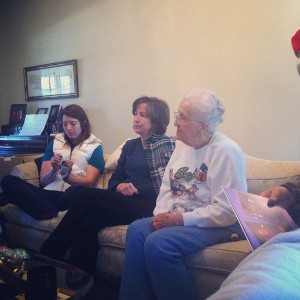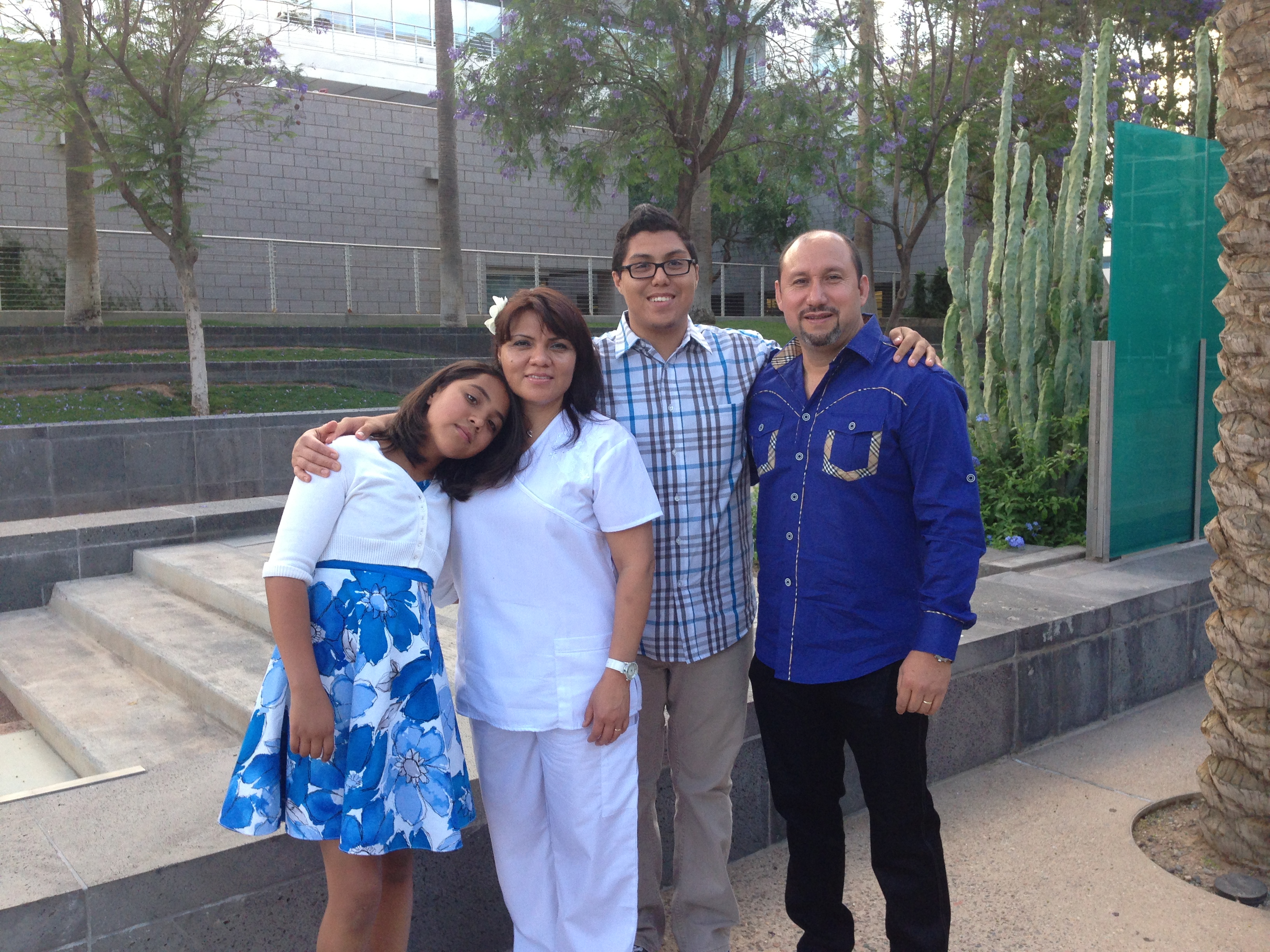Home is where two great minds think alike. #ShareHomeIs https://t.co/X6POSz3diO

Starting a family or preparing for retirement are large life transformations – ones that often involve the turmoil of changing homes, neighborhoods, and communities. But what if that wasn’t the case, and you could stay in your home and community, no matter what changes life throws your way?
That’s the ultimate goal of The AARP, AARP Foundation, Home Matters and Wells Fargo Re-defining Home: Home Today, Home Tomorrow design competition – we’re challenging architects, designers, and allied professionals to come together as interdisciplinary design teams to create new standards for housing in America that enable people to stay in their home as they travel through life’s various stages.
By leveraging universal design solutions to remodel an existing home located in Memphis, Tennessee, participating design teams will demonstrate attractive, adaptable, affordable, and replicable design elements that address and showcase livability by promoting aesthetic and functional designs for better living.
WHAT IS UNIVERSAL DESIGN?
Coined by architect Ronald L. Mace, a Fellow of the American Institute of Architects, universal design embodies designing a built environment to be aesthetic and usable to the greatest extent possible by everyone, regardless of their age, ability, or status in life.
While the phrase “universal design” may conjure images of barrier-free design staples (like ramps and grab bars), that is not the goal of this design competition. The guiding principles of universal design go far beyond accessibility issues. Remaining essentially invisible in order to assist in a seamless transition between life stages, including entering the workforce, building a family, coping with an empty nest, and discovering new passions after retirement, universal design principles take into consideration the needs of its homeowner at every stage.
When envisioning universal design, think OXO kitchen products versus grab-bars. OXO is a well-designed, well-known product line specifically founded on the philosophy of universal design, designing products for young and old, male and female, left- and right-handed, as well as those with special needs. With its debut of 15 kitchen tools in 1990, OXO set a new standard by creating effective, attractive tools that people of all ages and abilities were proud and eager to use. Now, that’s what we’re trying to achieve with the Re-defining Home: Home Today, Home Tomorrow design competition.
Are you ready to make the change in your own home? Easy-to-use, accessible, affordable products and services improve the quality of life of all citizens. But given a multitude of options, materials, evolving technologies and trends, how do you know what is right for your home and your family?
“Are you ready for universal design in your own home?”TWEET THIS
Involving an architect or designer at the earliest stage in project planning can allow for a better opportunity to analyze your needs, develop effective solutions, and propose ways to keep costs down. With a broad understanding of design and construction, an architect or designer can help guide you through the entire home renovation or building process, offer new ideas, and help you create your very own forever-home in the most efficient and effective manner.
This invaluable expertise and perspective that an architect or a designer contributes to the design and building process enriches how we experience the built environment and its connection to our everyday surroundings.
AIA San Francisco and its members are proud to partner on this important challenge. Our members from around the Bay Area are at the forefront of design and develop housing for all types of individuals and families. We’re looking forward to see what the architect and design community, and members of our 30+ partner organizations, develops for the competition. We know that the submissions will inform and improve our work here in San Francisco, and across the country, so that a home today can be a home tomorrow.
Having home is about the little moments you share with your family #ShareHomeIs https://t.co/NBOpirS0YH

As a middle-age woman, I decided to go back to school and become a nurse because I wanted to help improve the health of those around me. While attending college, the responsibilities of work and school greatly increased. I found myself with less free time to cook healthy, homemade meals and less time to do physical activities with my children. After graduation, I found that my family and I were heavier and our overall health had declined. I was not only concerned, but I also felt embarrassed that I had not done anything to prevent it. As a nurse and a mother, I feel obligated to teach about the prevention of diabetes and search for resources in my community to help not only my family, but also others in my community, live healthier, more active lives.
One in ten adults has diabetes type 2. In the United States, the number of cases of diabetes has increased significantly in the last few years, especially in children. Through my research and experience as a nurse, I have realized that specific ethnic groups and families with lower incomes are affected the most. Lack of exercise is one of the main reasons for the increase in the number of cases of diabetes. These low income-communities do not have the resources necessary to keep families active and to prevent diseases.
Diabetes is the root of many chronic diseases: renal, hepatic, cardiac, and gastro-intestinal diseases, as well as amputations and other metabolic complications. Many of these medical conditions could be prevented by providing resources in the community, teaching children about healthy foods choices, and promoting the physical activity.
I volunteer for the local fire department and I have learned that members of low-income communities lack access to proper preventive health care. These deprived populations are bombarded with cheap junk foods that are sold in restaurants, food stores, convenience stores, and even in auto-parts stores. These communities do not have access to grocery stores that many of us take for granted, offering healthier meal options that include grains, lean meats, fresh fruits, and vegetables. Another factor affecting these communities is the lack of affordable child care programs. Most of the parents work long hours and children are left home alone. Kids spend long hours watching television, playing video games or using the computer, and eating only accessible junk food without the option of eating healthy, homemade meals. These home situations are not only unsafe, but also increase their risk for diabetes and obesity.
Communities like these need safe environments, parks, and recreational facilities for children to play. They also need school programs that offer exercise and opportunities for social interaction. It has been proven that an increase in healthy food environments and opportunities for physical activities are associated with a lower number of cases of obesity and diabetes. Scientists from Harvard University have discovered that when a person exercises, our muscles release natural substances that help relax blood vessels, lower blood pressure, reduce bad cholesterol (LDL), lower glucose levels in the blood, lower insulin levels, and reduce inflammation. All of these functions protect against heart disease, stroke, diabetes, and even some types of cancer.

To promote healthier lifestyles, more awareness is needed, as well as educational interventions with community-based approaches. I feel fortunate to have received my education and live modestly. I would like for other families to be able to do the same – to go to college or afford to send their kids to college, to own their homes, and live in a supportive community, which provides resources to advance economically, academically, and where their children can grow safe and healthy. There is so much that could be done, but for now I will begin by preparing healthy meals for my loved ones, by teaching family and friends about diabetes prevention, and by spending more time playing and exercising with my children. I have realized that I enjoy walking with my daughter. We like to go shopping together and we talk about healthy options. We also do games at home to see if she can combine different ingredients to create a well-balanced meal and proper size portions. All of these are factors have helped me help my family prevent obesity, diabetes and other diseases.
“To promote healthier lifestyles, more awareness is needed.”TWEET THIS
There are several good resources for exercise from the American Diabetes Association about local events in the community and across the country. The name of one of the programs is “Step Out. Walk to Stop Diabetes,” a great way to learn more and stay healthy.
Hospitals also provide several resources and opportunities for healthy lifestyles. For example, in my community, Banner Health Hospital provides resources for families to stay active through their program “Go Kids!”.
And nationally, first lady, Michelle Obama created the “Let’s Move Program,” which provides information and resources to help lower or prevent obesity by teaching individuals and families to make healthier eating choices and staying physically active. I seriously believe that if communities do not provide resources for their families, activities for children, and safe living environments, these communities will never improve.
I will not give up on my children, on my family, on my community, nor on my own health. Together we can all make the difference.
Happy New Year! How would you like to see your community improve in 2016? Share via #ShareHomeIs. Have a safe & happy New Year #HomeMatters